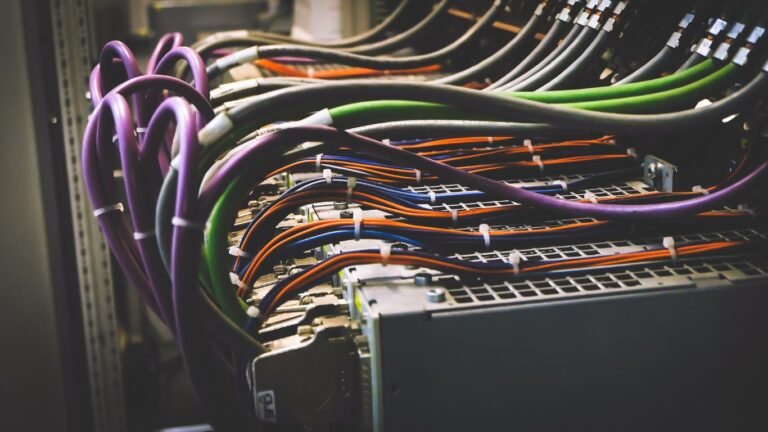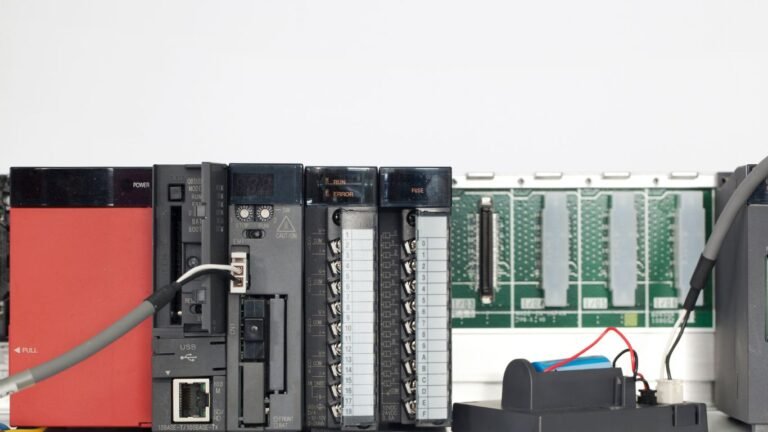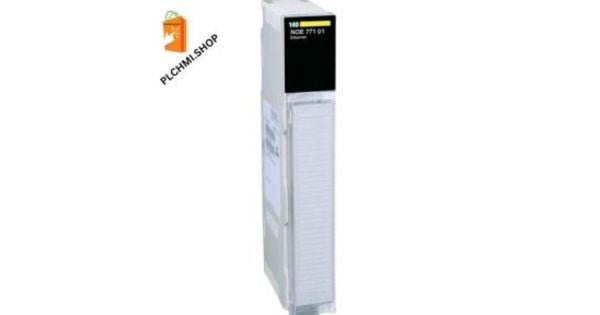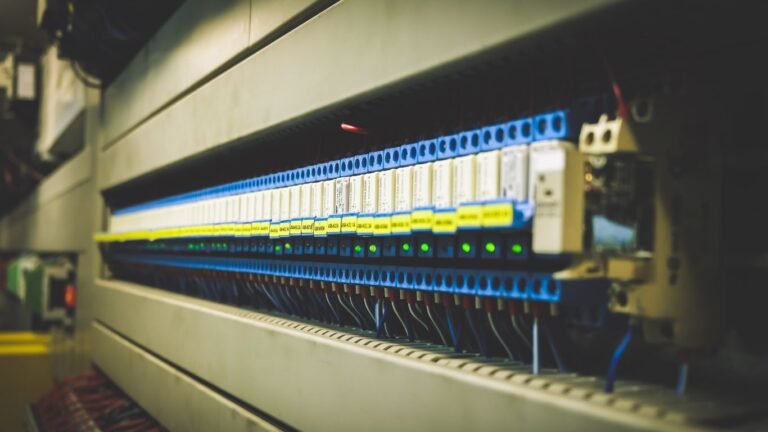Maximizing Performance with Modern PLC HMI Technology
In today’s industrial landscape, staying competitive means optimizing performance at every level. One of the most effective ways to achieve this is by leveraging the latest advancements in Programmable Logic Controllers (PLCs) and Human-Machine Interfaces (HMIs). Together, these technologies streamline processes, improve efficiency, and ensure real-time control over complex industrial operations. At PLCHMI, we offer the latest in modern PLC-HMI technology to help businesses reach peak performance.
The Role of PLCs in Industrial Automation
PLCs are specialized computers used to control machinery and industrial processes. They are designed to withstand harsh environments and are known for their reliability, precision, and ability to handle complex automation tasks. From controlling the movement of conveyors in manufacturing plants to managing the temperature in chemical processing units, PLCs automate tasks that would be difficult and time-consuming for human operators.
Key Features of Modern PLCs:
- Enhanced Processing Power: Modern PLCs have faster processors, allowing them to handle more complex tasks and larger data sets.
- Modularity and Scalability: Many PLC systems are modular, meaning they can be expanded with additional input/output (I/O) modules as the system grows.
- Integration with Other Systems: PLCs can communicate with other industrial devices using various communication protocols like Ethernet/IP, Modbus, and Profibus.
- Energy Efficiency: Many newer PLCs are designed to be more energy-efficient, helping businesses reduce their energy consumption.
Importance of PLC in Optimizing Performance:
With the ability to process vast amounts of data and make real-time decisions, PLCs are indispensable in automating manufacturing processes, thus improving overall operational efficiency. They minimize errors, reduce the need for manual intervention, and increase the speed and accuracy of production lines.
The Role of HMIs in Industrial Automation
Human-Machine Interfaces (HMIs) are the visual front-end devices that allow operators to interact with the PLCs and other control systems. They provide real-time monitoring and control of machinery, often through graphical displays that visualize processes, trends, and machine status. Modern HMIs have evolved to offer more user-friendly designs, advanced functionalities, and seamless connectivity.
Key Features of Modern HMIs:
- Touchscreen Interfaces: Today’s HMIs often feature intuitive, high-resolution touchscreens, allowing operators to easily interact with the system.
- Data Visualization: Modern HMIs provide detailed graphs, alarms, and diagnostics, offering insights into the production process.
- Remote Access: Many HMIs allow operators to access systems remotely via mobile devices or web browsers, enabling monitoring from any location.
- Multilingual Support: Given the global nature of many industries, HMIs now often come with multilingual capabilities to support diverse workforces.
Importance of HMI in Enhancing Performance:
HMIs act as the eyes and ears of the automation system, providing critical real-time data that helps operators make informed decisions quickly. By offering an intuitive interface, HMIs reduce the learning curve for operators, increase the ease of troubleshooting, and minimize the chance of costly errors. The ability to monitor systems remotely and receive real-time alerts can significantly reduce downtime, making HMIs vital in maximizing operational performance.
How Modern PLC and HMI Technology Work Together
The integration of PLCs and HMIs creates a highly efficient and intelligent control system that not only automates processes but also enhances visibility, control, and decision-making across the entire operation. When used together, PLCs handle the execution of control logic, while HMIs provide a clear, graphical representation of the process, allowing operators to monitor and adjust as necessary.
Key Benefits of PLC-HMI Integration:
- Real-Time Monitoring and Control: With the HMI acting as the interface, operators can monitor real-time data from the PLC and respond quickly to any issues or anomalies.
- Efficient Troubleshooting: HMIs often display error codes, alarms, or process failures. Operators can use this information to diagnose and fix issues faster, minimizing downtime.
- Data Logging and Analytics: Many modern PLC-HMI systems have built-in data logging features, capturing historical data that can be used for performance analysis, predictive maintenance, and continuous improvement efforts.
- Customized User Experience: The flexibility of modern HMIs allows for customizable dashboards that can be tailored to display the most relevant data for operators, ensuring quick and informed decision-making.
- Improved Safety: Through real-time monitoring and alerts, PLC-HMI systems can prevent accidents by alerting operators to hazardous conditions or equipment malfunctions.
Maximizing Performance through Modern PLC-HMI Technologies
To maximize performance using modern PLC-HMI technologies, industries need to focus on a few key strategies:
1. Leverage Data-Driven Insights
Modern PLCs can handle a large amount of data, which, when paired with HMI’s visualization capabilities, offers valuable insights into process efficiencies and bottlenecks. With this data, businesses can make informed decisions to optimize production, reduce waste, and increase throughput.
2. Implement Predictive Maintenance
Predictive maintenance, powered by data from PLCs and real-time monitoring via HMIs, allows operators to predict equipment failure before it happens. By scheduling maintenance activities based on actual equipment condition rather than time intervals, companies can reduce downtime and extend equipment life.
3. Enhance Connectivity for Seamless Integration
Modern PLC-HMI systems are designed with connectivity in mind. They can integrate seamlessly with other industrial systems, such as SCADA (Supervisory Control and Data Acquisition) and MES (Manufacturing Execution Systems), to provide a unified view of the entire operation. By leveraging industrial internet protocols, operators can view data across multiple facilities, ensuring consistent performance.
4. Focus on User-Friendly Design
While the technology behind PLCs and HMIs continues to evolve, the importance of user-friendliness remains constant. A well-designed HMI interface ensures that even operators with limited technical knowledge can effectively control and monitor complex systems, improving both safety and productivity.
5. Prioritize Cybersecurity
As more industrial operations adopt interconnected systems, cybersecurity becomes a critical factor. Modern PLCs and HMIs are often part of larger networks and can be vulnerable to cyber threats. Implementing robust security protocols, such as secure authentication, encryption, and network segmentation, is vital to protect against malicious attacks.
Conclusion
Maximizing performance in industrial automation requires the seamless integration of modern PLC and HMI technologies. Together, they offer real-time control, advanced data analytics, predictive maintenance capabilities, and enhanced operator interfaces that empower businesses to optimize their operations. As industries continue to adopt these technologies, the potential for increased efficiency, safety, and productivity becomes even more attainable. By leveraging the strengths of both PLCs and HMIs, companies can stay ahead in the rapidly evolving world of industrial automation.
At PLCHMI, we offer the most advanced PLC-HMI solutions designed to enhance your industrial processes, improve operational performance, and ensure long-term success. Whether you’re upgrading an existing system or building a new one, our expertise and cutting-edge products can help you achieve maximum efficiency and performance in your operations.
Contact
Reach out to our team by phone: (+1) 416 840 4997 or by email: sales@plchmi.shop Check out our website, PLCHMI.shop, for more information on industrial automation products.






